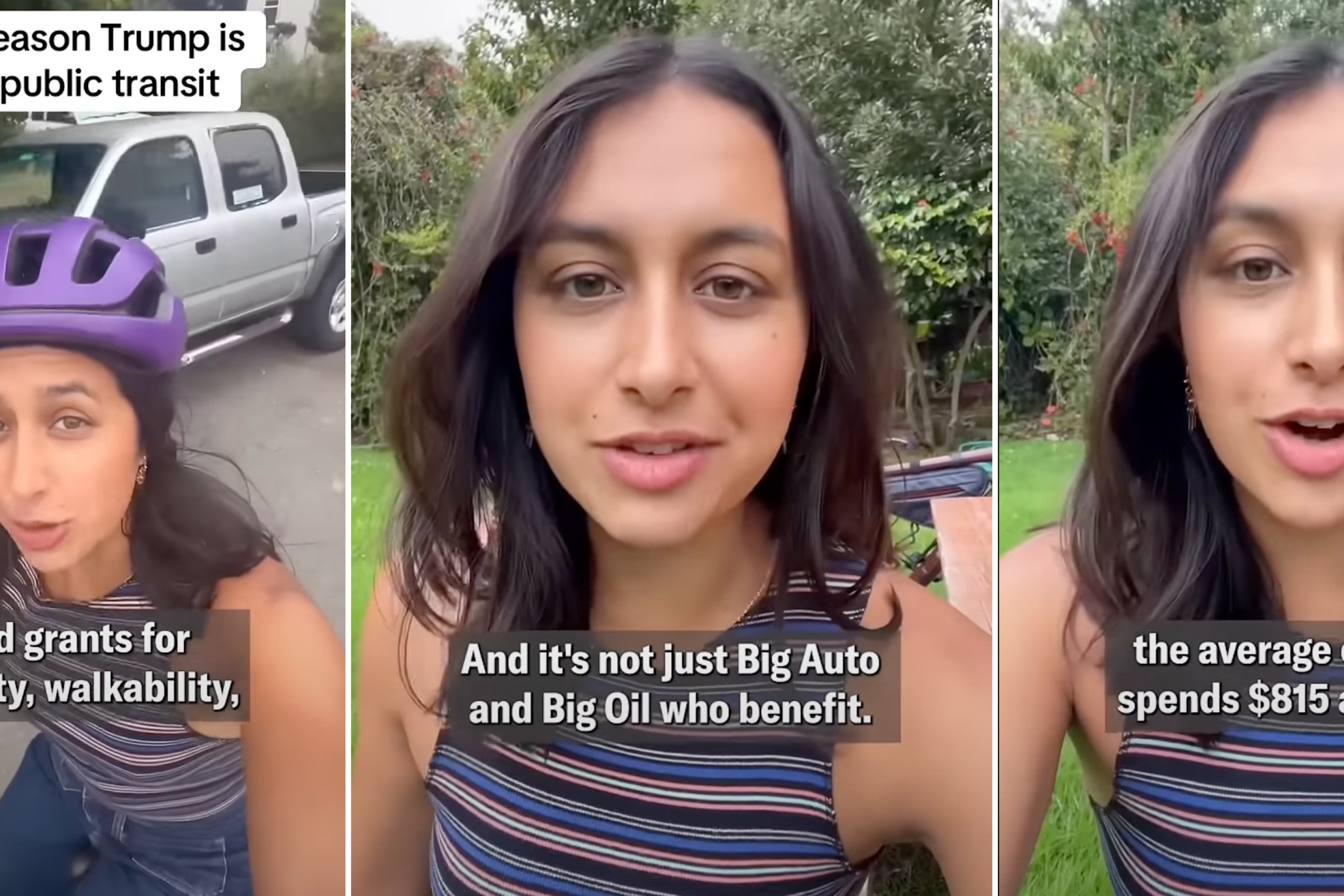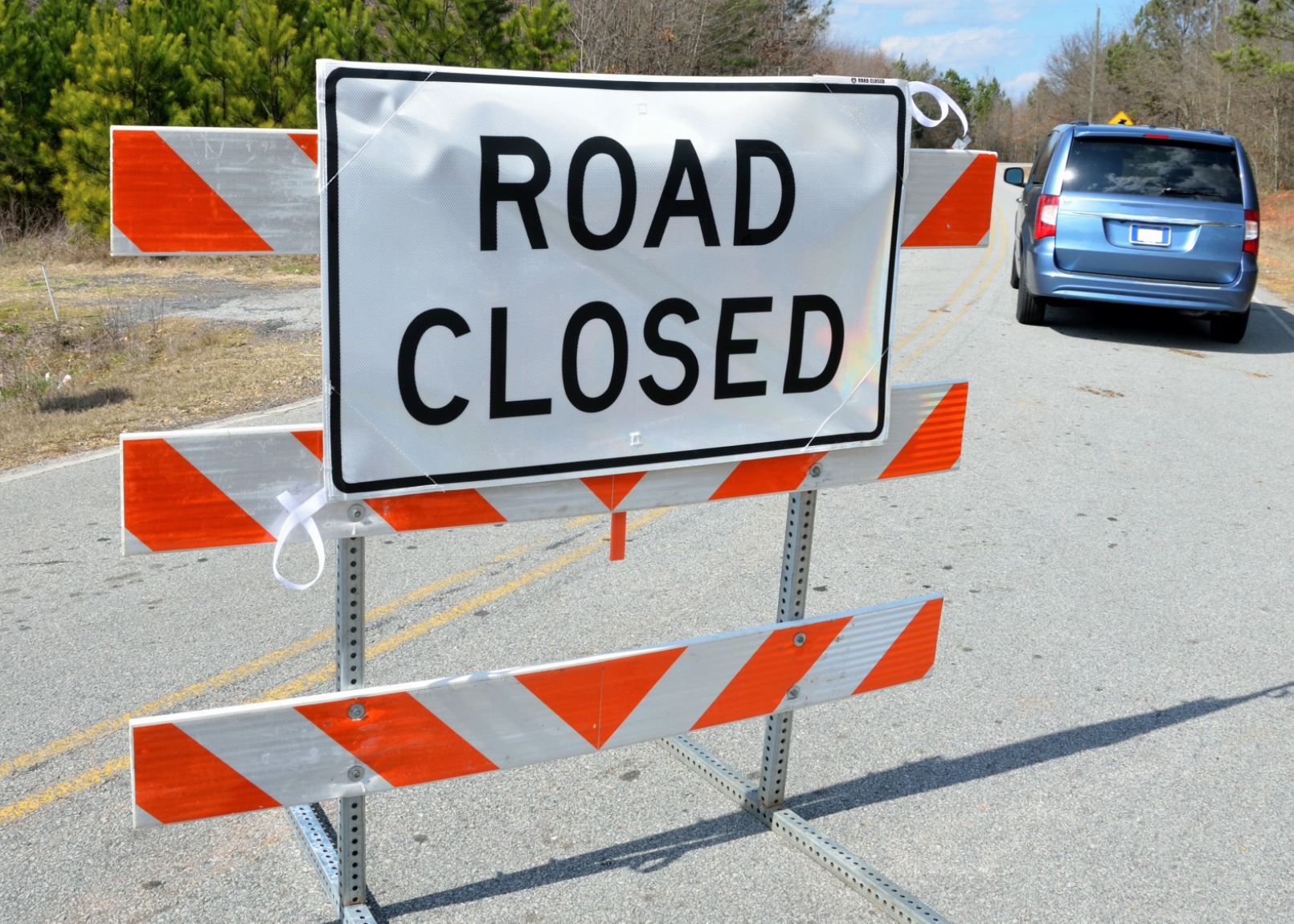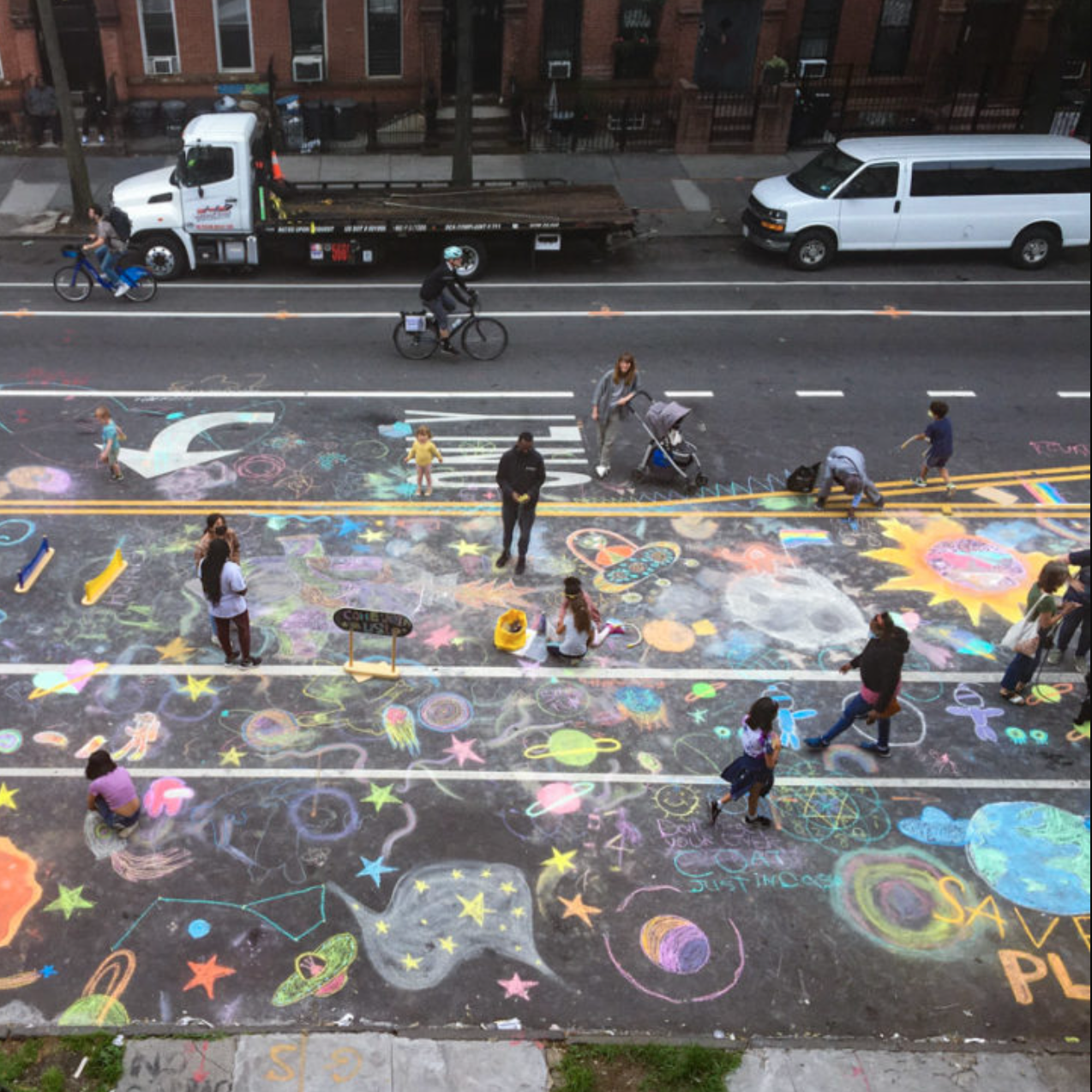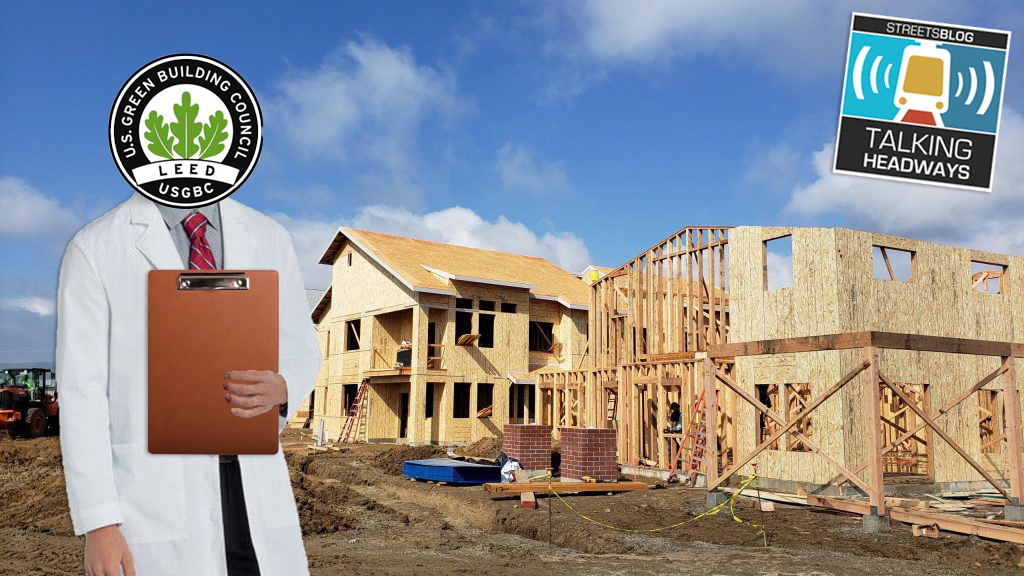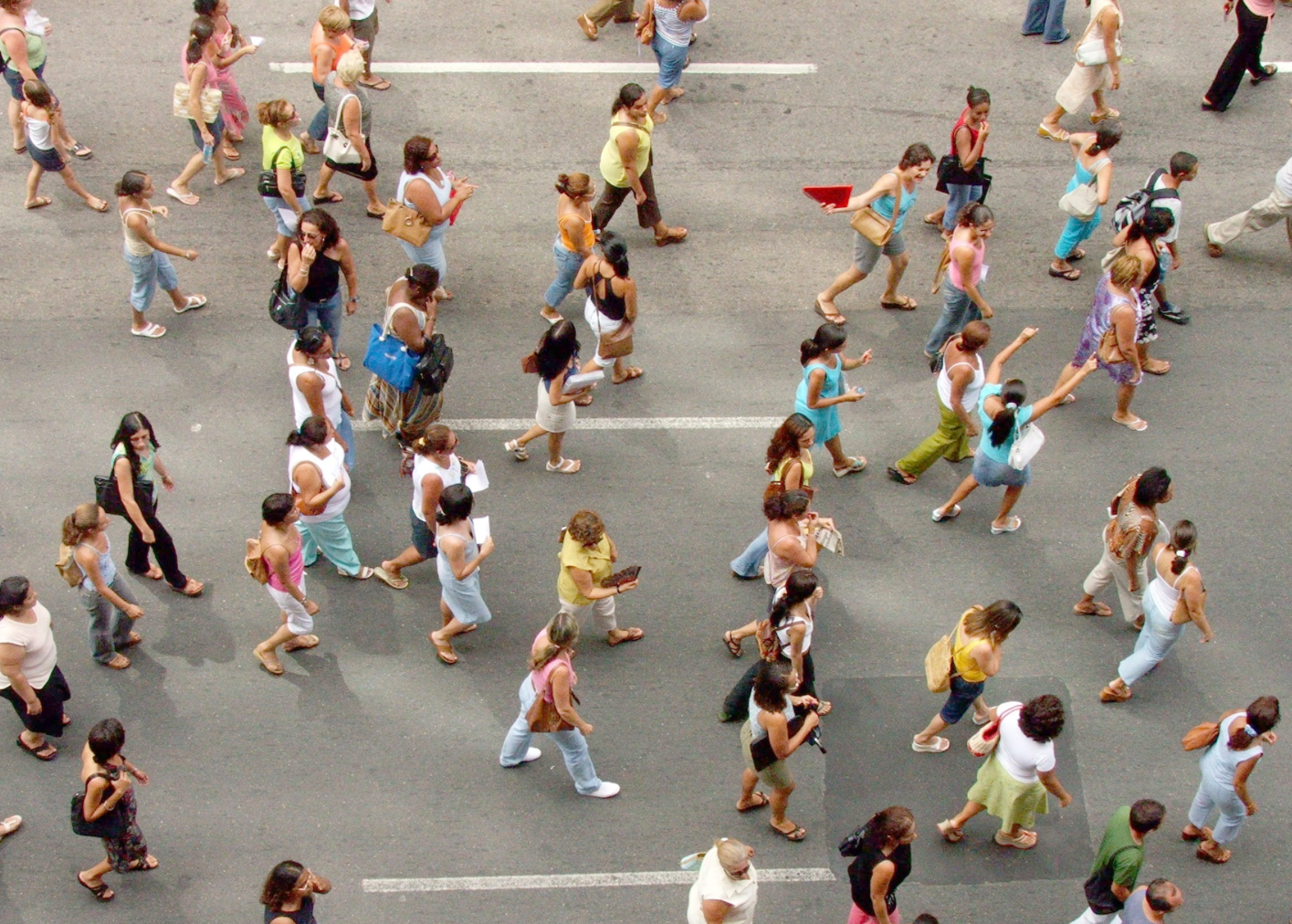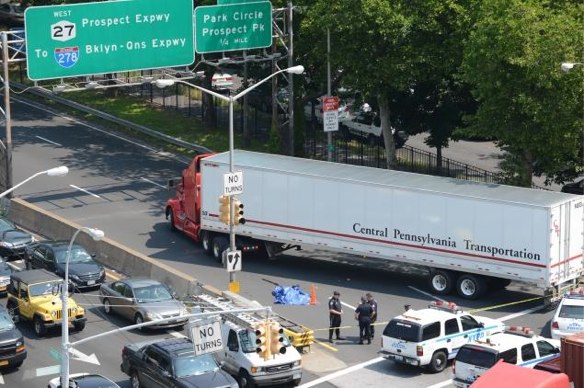
About 350 pedestrians, cyclists and motorcyclists are killed each year by large trucks in this country. Big freight trucks are incompatible with cities in many ways, bringing danger, pollution, noise, and traffic congestion. They park in bike lanes and have shockingly big blind spots, putting everyone around them at risk. And yet, most cities haven't found a way to reconcile the need to move goods with all their other priorities.
Meanwhile, as more and more cities prioritize walkability and bike-friendliness, they often neglect the task of reconfiguring freight logistics.
As part of the MAP-21 transportation bill, U.S. DOT convened a Freight Advisory Committee to help inform the creation of a national strategic plan for freight transportation. One of the advisory panel’s six subcommittees focuses on the first mile/last mile problem, but even that one subcommittee is reportedly more concerned with port access than delivery issues at the destination. The interplay between urban freight transportation and smart growth is far from a core focus of the committee.
It should be a top priority for urbanists and complete streets advocates, though. If we don’t help cities plan for freight movement, what we’ll get is unplanned freight movement, and all the chaos that comes with it. About 80 percent of freight in cities is delivered by trucks, and those trucks pose a significant threat to livability.
Loading and unloading slows traffic and takes up street space. When businesses do have dedicated loading docks, they reduce available space for the business and for the pedestrian activity that enlivens urban spaces. Then there’s noise pollution, air pollution, and safety concerns.
And yet, our cities run on the goods these hulking trucks deliver -- and the garbage they take away. (Yes, trash pick-up is a freight question too.)
Suburbs are paradise for freight companies. Density is high enough that they can fill their trucks to the brim but low enough that roads are big and wide and parking lots stretch to the horizon. Destinations are close enough together that trucks can make multiple deliveries, and distribution warehouses tend to be located in suburbs.
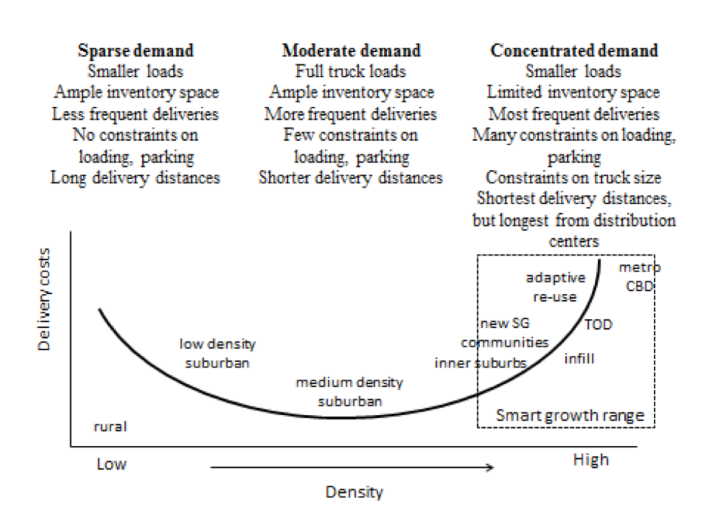
But according to Genevieve Giuliano, a member of the national Freight Advisory Committee and the nation's top expert on urban goods movement, everything there is to love about cities is everything that makes freight movement hard. Land values are high. Everybody’s fighting for scarce street space. Big trucks can’t fit around all the tight corners. Stores have a smaller footprint, and less storage space means more frequent deliveries. And the distribution center is 40 miles away.
“Smart growth is all about moving up that curve to become more dense,” said Giuliano. “And the more you move up the curve to become more dense, the more all of these challenges will kick in. And in smart growth, nobody ever thinks about freight.”
That sentiment is echoed by SUNY-Buffalo Professor Qian Wang, who is presiding over an urban freight session at the annual Transportation Research Board meeting next week, in which dozens of researchers will present their work on the issue.
“Now researchers are talking about how to add freight and the trucking industry into the big picture,” Wang said, “so that the ‘smart’ is not just smart for the community, but also for the truck and the freight.”
FedEx and UPS notoriously pay cities millions a year in parking tickets, considering it a necessary cost of doing business. Often, rather than pay each individual ticket, they negotiate a lump sum with the city, removing the incentive for drivers to park legally.
The fact is those cities have never come up with a realistic plan for how to supply the stores, restaurants, and offices that make them tick. So double-parking has, essentially, become a foundation of our nation’s unsustainable freight strategy.
Giuliano -- a member of a federally-convened national committee on freight, mind you -- isn’t so convinced that any of this is really a federal issue. There’s a lot cities can’t control when it comes to freight -- the fact that you eat out every day instead of subsisting purely off your rooftop garden, for example, resulting in the need to stock restaurants with all your favorite imported beers and off-season produce. But cities can control some things, and Giuliano says they should probably be the ones taking leadership here.
It’s unlikely a single city street will be designated part of the official, 27,000-mile national freight network that U.S. DOT is also currently tasked with coming up with -- after all, there are 47,000 miles of interstate vying for the title -- but cities can designate their streets as truck routes.
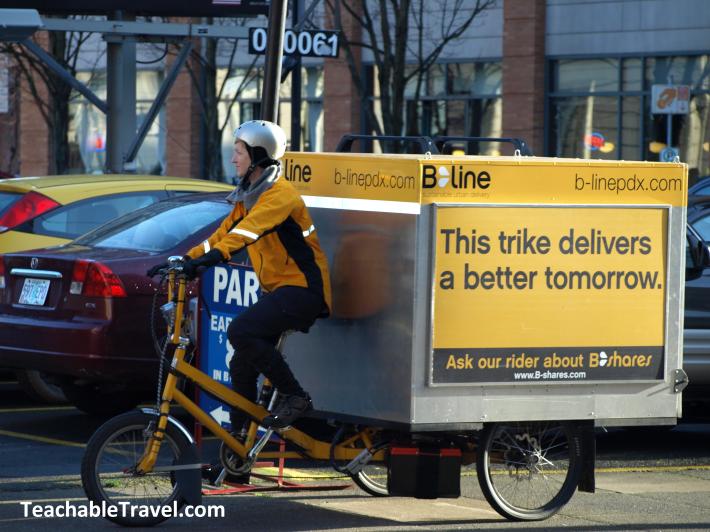
Unfortunately, many cities haven't done a great job of establishing truck routes, and there’s little to no public data about where trucks go once they leave the port, so there’s not much to work with. But Wang says freight companies have excellent data on the movement of their trucks; they just don't share it readily with academics or city planners.
Giuliano said truck route enforcement in many cities is quite robust, and truckers are far more sensitive to moving violations than parking violations. But as Wang notes, every mode is jockeying for space on “truck routes” too.
Cities can also work freight into their building codes. New York City has mandated that developers have to plan for onsite loading facilities as part of their design. And there are other creative ways some researchers have come up with for managing freight in dense communities:
- Smaller trucks. Large trucks can shift their loads onto smaller trucks for urban deliveries. That means more trucks but smaller ones, which can also be electric, reducing some of the negative impacts on the city. It also means more time, labor and cost for trucking companies. I asked Giuliano if unions had been a part of the conversation, and she said that most local delivery companies aren’t unionized. Where you have unions, she said, is the receiver side, making the following idea challenging:
- Off-peak delivery times. Though this can create noise pollution in residential areas in the dead of night, bringing trucks into the city during low-congestion times makes a lot of sense. However, as Giuliano said, that means someone either needs to be at the store (getting paid time-and-a-half during a time there’s usually no one on the clock) to receive the shipment, or they need to trust the distributor that everything will go perfectly without supervision. Variable road pricing, more expensive at peak times, also helps to incentivize trucking companies to delivery at off-hours but doesn’t do anything to entice the receivers.
- Load consolidation. It can be hard for competing suppliers to cooperate, but when they group their goods together on one truck, it can make for fewer trips -- though it can also make for bigger trucks.
- Cargo bikes! The European Union has a project to study ways to move freight to modes with fewer negative externalities than trucking. The project, called Cycle Logistics, has estimated that 42 percent of urban freight could go on bikes instead of trucks. A Boston-area company, Metro Pedal Power, uses pedal-trucks to haul up to 500 pounds of localized freight. Again, it’s a lot of load-shifting and a whole lot more labor costs, but wow -- I want to live in the city that has 42 percent of its freight delivered by bike. At the very least, you’d have some ripped delivery men.
Giuliano is skeptical that bikes can take over such a high percentage of truck freight, but she allows that it’s not impossible. “In Tokyo, the truck comes in and it parks. And then a bunch of people hand deliver or bike deliver from that point.” It’s a lot of loading and unloading and a lot higher labor costs. “If that’s the price of a more pleasant environment and cleaner air, then it’s a good bargain, right?”
